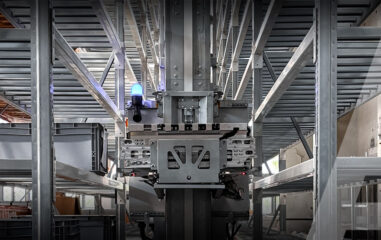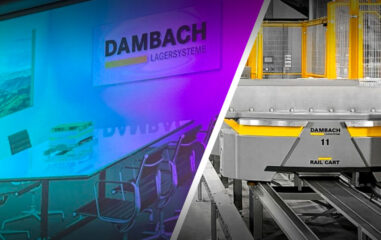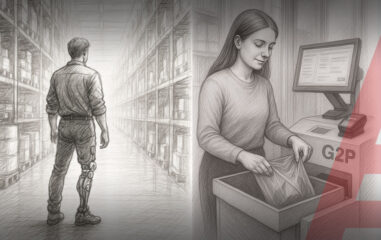Features of automation of a pharmaceutical warehouse

The only pharmaceutical distributor capable of surviving the intense competition at the market is the one that keeps up with the latest trends: season fluctuations of the medicines demand, legal amendments, special aspects of operations during the coronavirus pandemic, and inflation processes.
It is important to constantly control logistics costs, in particular the ones for warehouse handling of medicinal products. If the value of these processes is too high, clients will choose the competitors that will offer a better price. Speed of delivery and completeness of orders are of the same importance. It depends on the well-managed professional operations of the pharmaceutical warehouse staff and the use of innovative warehousing automation systems.
At present, the pharmaceutical warehouse discharges the supplier’s function by entering into contracts with pharmacy chains and hospitals and manufacturing plans, including foreign companies. At the same time, a medicinal product is a specific commodity because the need for the product arises only when a person falls ill.
In the pharmaceutical market, a pharmaceutical warehouse is treated as a healthcare facility. Therefore, the distributors that effect storage and wholesale trade in medicinal products shall obtain a licence of the State Service of Ukraine on Medicines and Drugs Control. This document certifies that the clients of the supplying pharmaceutical warehouse (pharmacy, hospital) will receive the medicinal products that have been stored and carried within the adequate temperature range, and their quality has been checked with incoming control and fully maintained. The licence may be revoked if storage or carriage conditions have been breached. Also, a distributor will never be granted a licence unless it has adequate physical infrastructure for warehousing operations and qualified staff.
The number of pharmaceutical warehouses in our country varied from 3,000 in the 1990s to 700 in the 2010s. Now there are up to 50 warehouses with efficient operations and a large scope of the pharmaceutical products stored. Three major distributors from among them (BaDM and Venta in Dnipro, Optima Pharm in Kyiv) supply medicines to 85.4 % of pharmacies.
In 2020, pharmacological goods were sold in Ukraine for 92.9 billion hryvnias (+7.9 % in UAH in comparison with 2019 and +3 % in USD). However, 1.1 billion packages of medicines were sold, which is 4 % less than the previous year. The growth was caused by an increase in sales of personal protective equipment as well as antibacterial and disinfecting products.
During the first quarter of 2021, the medicinal products were sold for 26.7 million hryvnias (-10 % in USD terms owing to inflation), the same amount as during the equivalent period last year. 266.9 million packages were sold by retail (-19 %). According
Principal Peculiarities of Pharmaceutical Warehouses
Each medicinal product has to be stored in strictly regulated conditions, within the specific temperature range and relative air humidity, since these factors must not harm active ingredients and finished medicinal products. The life and health of the patients who will take the products depend on the above.
That is why a modern European-style pharmaceutical warehouse has to meet the international GDP (Good Distribution Practice) and GMP (Good Manufacturing Practice) requirements. They prescribe several special parameters to be met during the storage and carriage of medicinal products.
The warehousing centre is qualified to make sure that it meets international requirements. First, it is done at the design stage, then – twice during operations, in the cold and warm seasons (in order to check the operation of the cooling and heating systems). Also, each pharmaceutical warehouse has to be located in a separate permanent building with a separate entrance or at utility premises at the pharmacological manufacturing facility.
A modern pharmaceutical warehouse of a distributor shall be made of the following zones:
- convenient loading and unloading site for vehicles (ramp with a tent);
- production facilities where goods are accepted/stored/packaged and dispatched, each with the area of at least 250 m²;
- premises for incoming control of the goods and sampling;
- quarantine area;
- auxiliary premises to prepare disinfecting solutions, to equip the server room, to keep the tools etc.;
- administrative premises with the manager’s office, cloakroom, staff room, shower room and WC.
The passage to the amenity zones where the staff change their clothes must not go through the production zones. The height of the warehouse ceiling is usually at least 10 m since it enables the warehousing of the products at four levels. The volume of the building is optimally used this way. The minimum total area of the pharmaceutical warehouse starts from 750 to 1,000 m². Large distributors of medicinal products can have an area of more than 15,000 square meters.
There shall be the following at the European-style pharmaceutical warehouse:
- efficient air ventilation and conditioning system;
- continuous-pour floor with the dust-free surface;
- disinfectant-resistant surfaces of the walls, ceiling and floor;
- hygienic panel heating radiators;
- refrigerating chambers for the medicines stored within the temperature range of +2–8°С;
- advanced fire extinguishing system;
- electronic access system at the doors to all the premises;
- warehouse management system (WMS) that controls actions of all the staff and mitigates errors when orders are made;
- automated conveyor line to process goods quickly and to form and dispatch orders.
Moreover, refrigerating chambers have to be equipped with around-the-clock monitoring devices that control the temperature range. There are the latest systems that inform of the slightest deviation via a text message.
It is very important to organise the high-performance operations of the warehousing pharmaceutical centre. The staff have to be very attentive and consider additional processes when they work with medicines. When they accept the goods, they have to divide medicines into groups quickly and neatly, based on the storage conditions, to ensure the integrity of packaging and monitor the shelf life all the time. When they dispatch medicinal products, they have to adhere to the international packaging, plugging and labelling standards. Moreover, all the medicines received at the distributor’s warehouse shall have state registration. It applies to both imported and domestic products.
The warehouse should also be geographically located so that minimum time will be spent to transport medicines to pharmacies and hospitals. That is because strict temperature range and humidity requirements have to be respected when medicinal products are carried.
Seasonal Nature of the Medicines Market
The market of pharmaceutical products is not stable: it keeps changing all the time. It is directly influenced by various external factors: epidemics, lockdown, decrease/increase in citizens’ income level, amendments to the Ukrainian laws, denial of state registration of certain medicinal products etc.
Sales traditionally go down from March to August (by approximately 40-45 %), and growth starts in October, with the peak in December when the scope of sales goes up by 40 %. Moreover, the material increase in medicines sales is associated with more acute respiratory diseases and flu cases in winter.
However, due to the coronavirus pandemic, the peak of medicines sales in 2020 was in February (+28.4 % against the equivalent period in 2019), and the sales decline – in April (-20 %).
In order to mitigate risks, owners of the efficient pharmaceutical warehouse regularly order detailed marketing research of the pharmaceutical market. Market specialists study current consumer needs as well as all the available information on suppliers and competitors.
Further activities can only be planned based on up-to-date information. It requires a timely understanding of the product groups where shortage will occur and of expected periods of excess of certain medicines. Many products have a limited shelf life, and if they are not sold on time, there may be considerable losses or even bankruptcy.
Tasks Resolved with KAPELOU Equipment
The portfolio of the projects implemented by KAPELOU contains more than 420 facilities. 16 % of the projects have been implemented in the pharmaceutical industry in Ukraine and Belarus. It is one of the key industries of the company, which has been effecting integrated warehouse automation for eight years.
KAPELOU equipment at the pharmaceutical distributors’ warehouses:
- considerably accelerates fulfilment of orders for pharmacy chains;
- reduces logistics costs within the warehouse;
- minimizes the number of errors during the fulfilment of orders;
- makes the work as simple and comfortable as possible for the staff.
In order to resolve these tasks, our engineers use automated conveyor systems KAPELOU® at the pharmaceutical distributors’ warehouses. They are made of modules and can be of different types: vertical, horizontal or with the tilt angle of up to 16°, powered or non-powered, roller or belt ones.
KAPELOU combines conveyors with innovations by the German company called META, which manufactures box gravitation systems. These are the racks with the shelves made of rollers and located at the angle of 2-3°. One side is used to load the products only, while the opposite one is used for selection. It enables saving the warehousing area as much as possible and makes the selection of goods by order pickers much faster. The product rolls down to the edge of the shelf owing to its weight and is always accessible for quick selection.
The innovations offered by KAPELOU help minimise the need for the staff to get around the warehouse since bins between stations and goods selection zones are delivered by the conveyor. It considerably accelerates the selection of goods and mitigates errors, and also increases the competitive benefits of the company.
At present, the warehouses use three basic order fulfilment principles:
An employee with the cart gets around the warehouse and selects necessary goods.
Order pickers are assigned to specific zones, bins are moved to each zone using the non-driven conveyor. An order picker has to look at all the bins delivered to his/her zone and select the goods into the necessary ones. The final destination of bins is the packaging zone.
People work in separate zones, and the roller conveyor delivers the bins only to the zones where the goods must be selected. All the bins with no selection go by in certain zones, so employees do not have to waste their time and can select the goods for the necessary bin more carefully. Such automation reduces the number of errors almost down to zero and can make up to 0.002 %.
If gravitational shelves are added to the third option, fulfilment of retail orders gets much faster. It improves the pharmaceutical distributors’ competitive advantages in the market and reduces warehousing expenses.
Price. Speed. Quality
Lower warehousing costs influence the prices of medicinal products for retail consumers. The price is the first parameter when a pharmaceutical distributor is chosen. The second one is order fulfilment speed, and the third one – operational quality and number of errors in orders. The automated weighing modules developed by Kapelou enable contactless (without a warehouse employee) measurement of the actual weight of the bin with the product, and then this information is compared against the WMS data on the bin, and the decision is taken whether the fulfilled order is correct. If the actual weight and system data coincide, the bin is automatically delivered to the packaging station. If the data differ, the conveyor delivers the bin to the manual control station. Thus, time and money used to control fulfilled orders are saved.
Integrated warehouse automation solutions and equipment by KAPELOU® improve all three indicators. The less the staff get around the warehouse, the sooner the order is fulfilled and dispatched. The number of orders is mitigated since order pickers work only with those bins to which goods must be selected. When the weight control system is additionally used, the possibility of an error is practically eliminated even when the warehousing operations are intense.
Examples of Use of KAPELOU Equipment at the Pharmaceutical Distributor’s Warehouse
At the beginning of 2021, KAPELOU automated the warehouse of 2,800 m² of KOMFARM, the pharmaceutical distributor in Belarus, in Minsk. Its range includes 11,000 stock units of pharmaceutical products (SKU), and orders are processed several times a day. The KAPELOU team introduced the technology for the high-speed selection of goods at the warehouse by means of its own conveyor supplemented with the box gravitation system.
We have developed special software for the warehouse of KOMFARM to settle all the logistics matters. The customised concept solution has enabled upgrading the entire warehousing technological chain, from receipt of goods at the warehouse to dispatch thereof to pharmacies.
Ukraine has warehouses with such retail order processing technology, for instance, Watsons store chain. We have installed the spiral conveyor with an hourly capacity of 3,000 boxes of up to 30 kilos and different sizes at the company’s warehouse. Moreover, we have designed and set up the operation of the automated sorting system with 24 shoots, which accelerates the sorting of a wide range of goods and parcels of different size and weight. It has mitigated the number of errors by order pickers and accelerated the process of dispatch of goods to 420 Watsons stores all over Ukraine.
KAPELOU integrally implements warehouse automation projects. First, we analyse all the information on its operations and develop several concept solutions. Our main task is to improve business processes at the client’s company. For this purpose, we use the best-advanced technologies, and more than 420 completed projects give us the expertise necessary to automate warehouses of different complexity.
The minimum period necessary to create a concept solution is two weeks to a month. It depends on the size of the warehouse and the complexity of the processes applied. Assembly of the automation system takes from seven business days.
Pharmaceutical Distribution Trends
There is a clear trend of reformatting of the entire pharmaceutical market: decrease in the size of orders and increase in the number thereof. Many of the distributors have already started working with retail orders received from the websites of their partnering pharmacies. Orders are fulfilled at distributors’ warehouses and dispatched to end consumers at pharmacies.
Medicines will be sent by mail soon owing to the legislative amendments, and it will result in even larger numbers of small orders. The only pharmaceutical distributors to remain competitive in the market will be the ones with the automated warehouses and improved indicators of costs, time and accuracy.
The next stage of pharmaceutical warehouse automation will be sorting systems where a large number of small orders will be fulfilled and sent to different regions and cities of Ukraine.
As they keep monitoring the pharmaceutical market trends, the engineers at KAPELOU have developed new conceptual solutions employing sorting systems, AGV machines and delta robots. In KAPELOU® equipment, we have considered all the existing time challenges and are ready to share convenient and efficient solutions with our clients.

Today, warehouse efficiency is measured in seconds, not hours. Modern warehouses are no longer just spaces packed with racks – they’re dynami...

On August 19-20, 2025, our engineering team completed training at Dambach Lagersysteme (Germany), a manufacturer of storage and retrieval equipment...

In recent years, the warehouse has evolved far beyond being just a place to store goods. It is now a dynamic, technology-driven environment –...
 Close
Close
 Back
Back


 Close
Close











